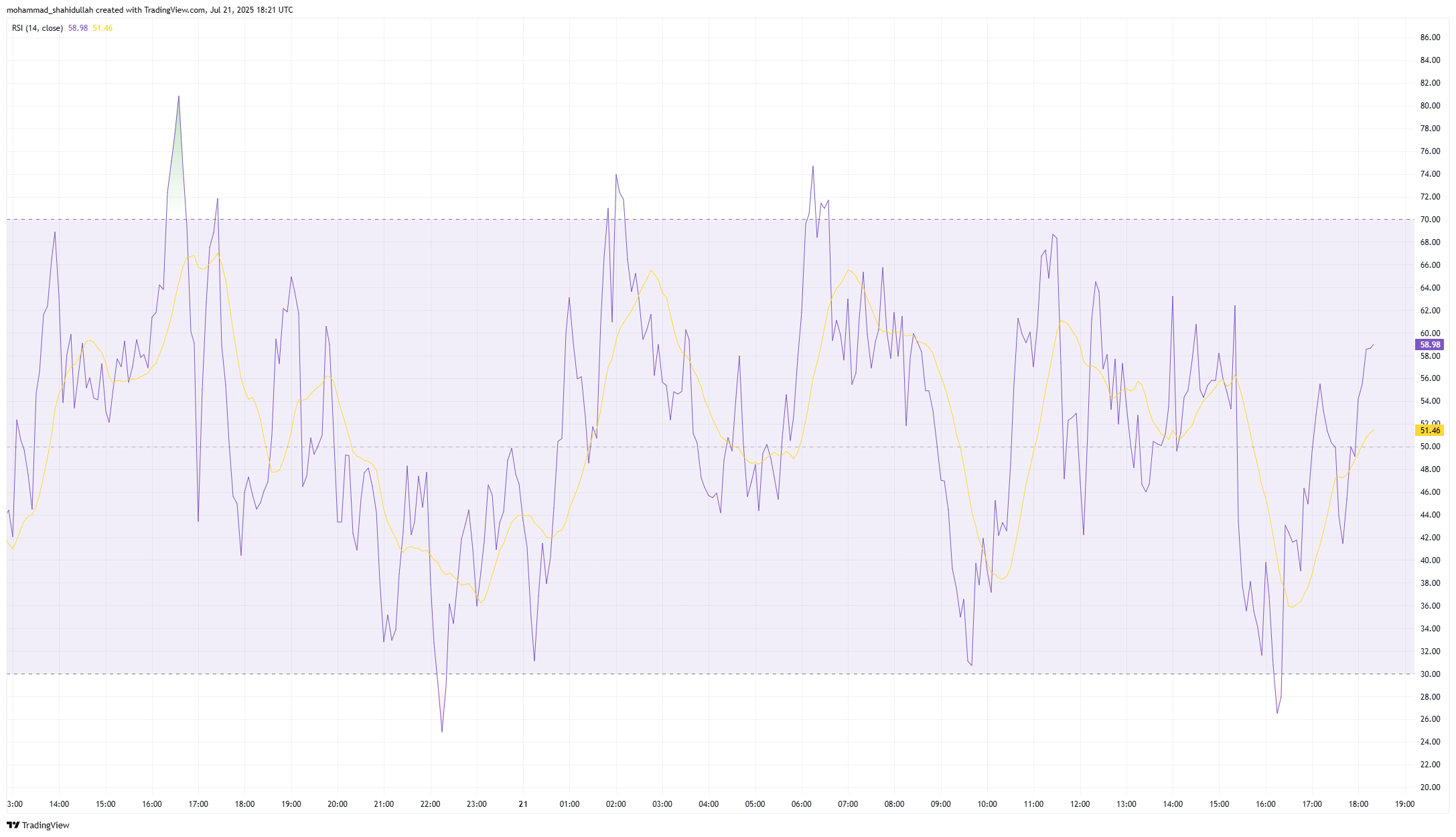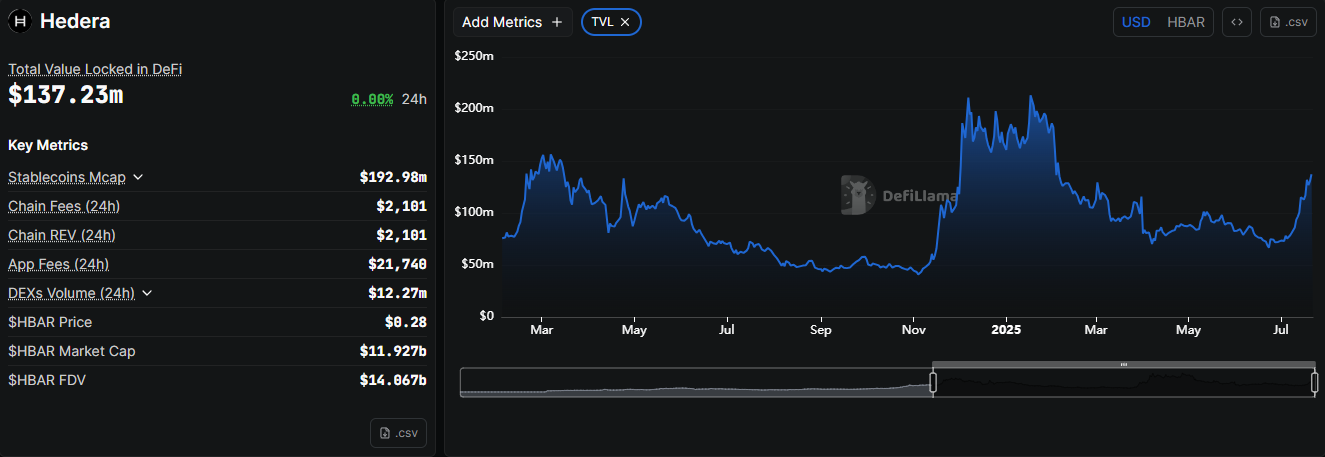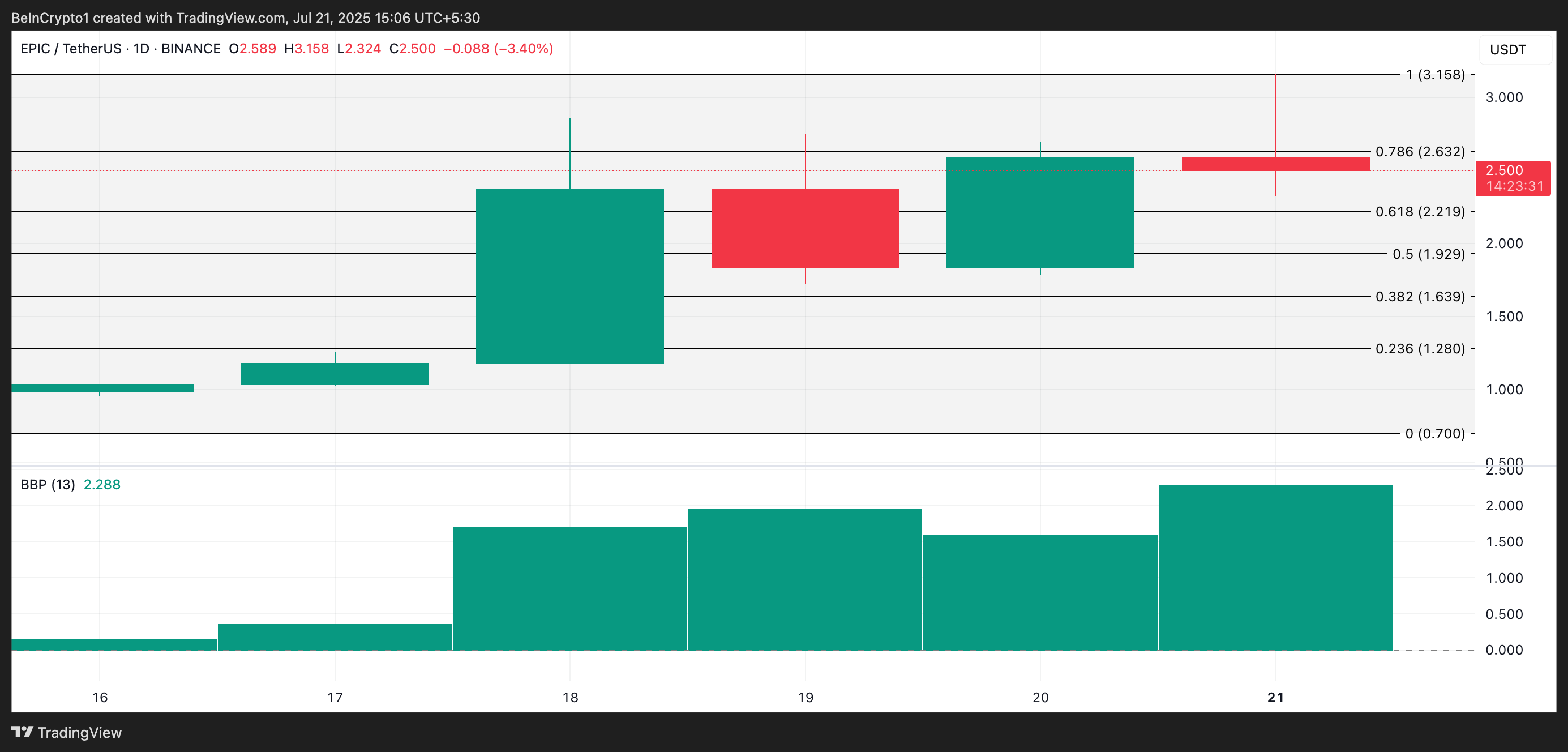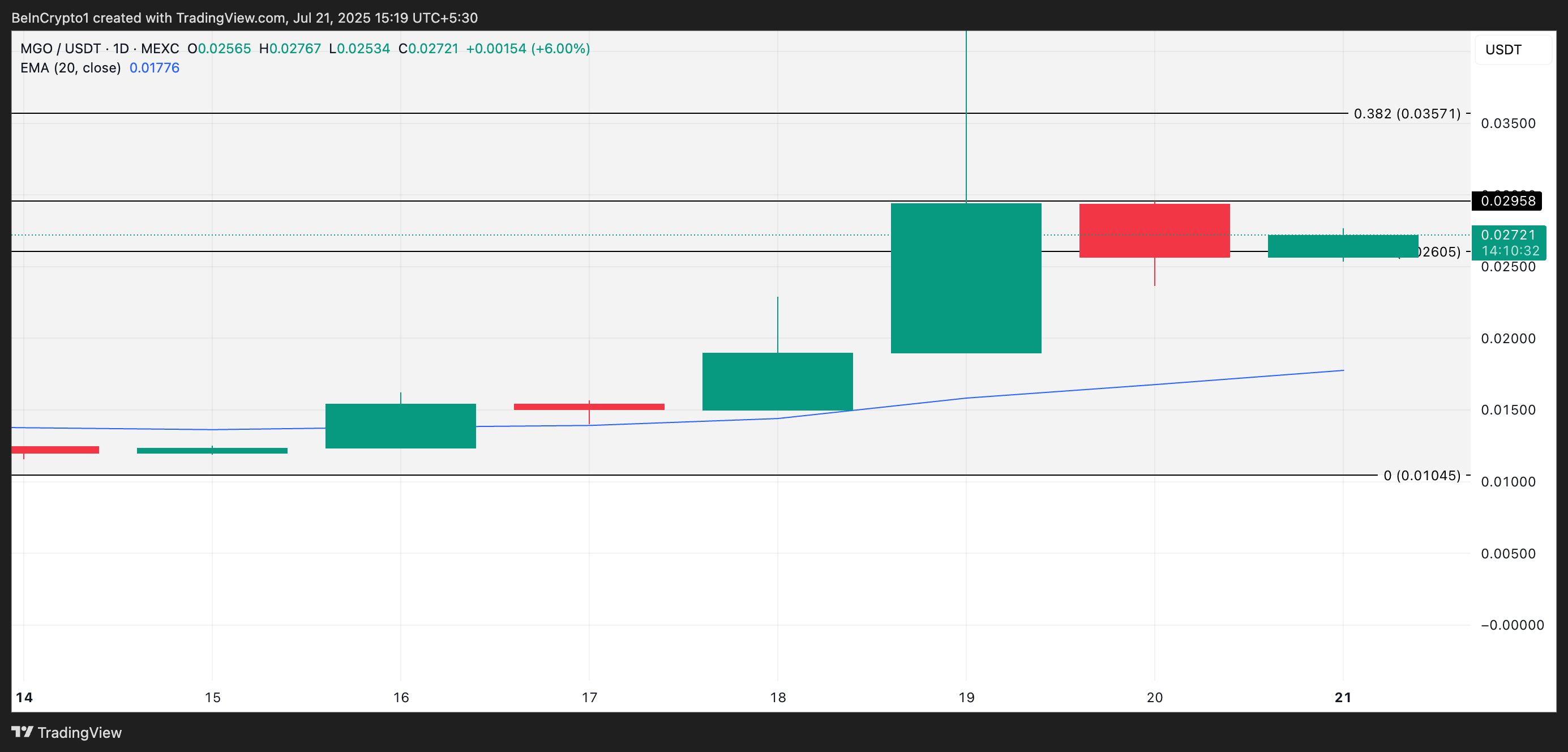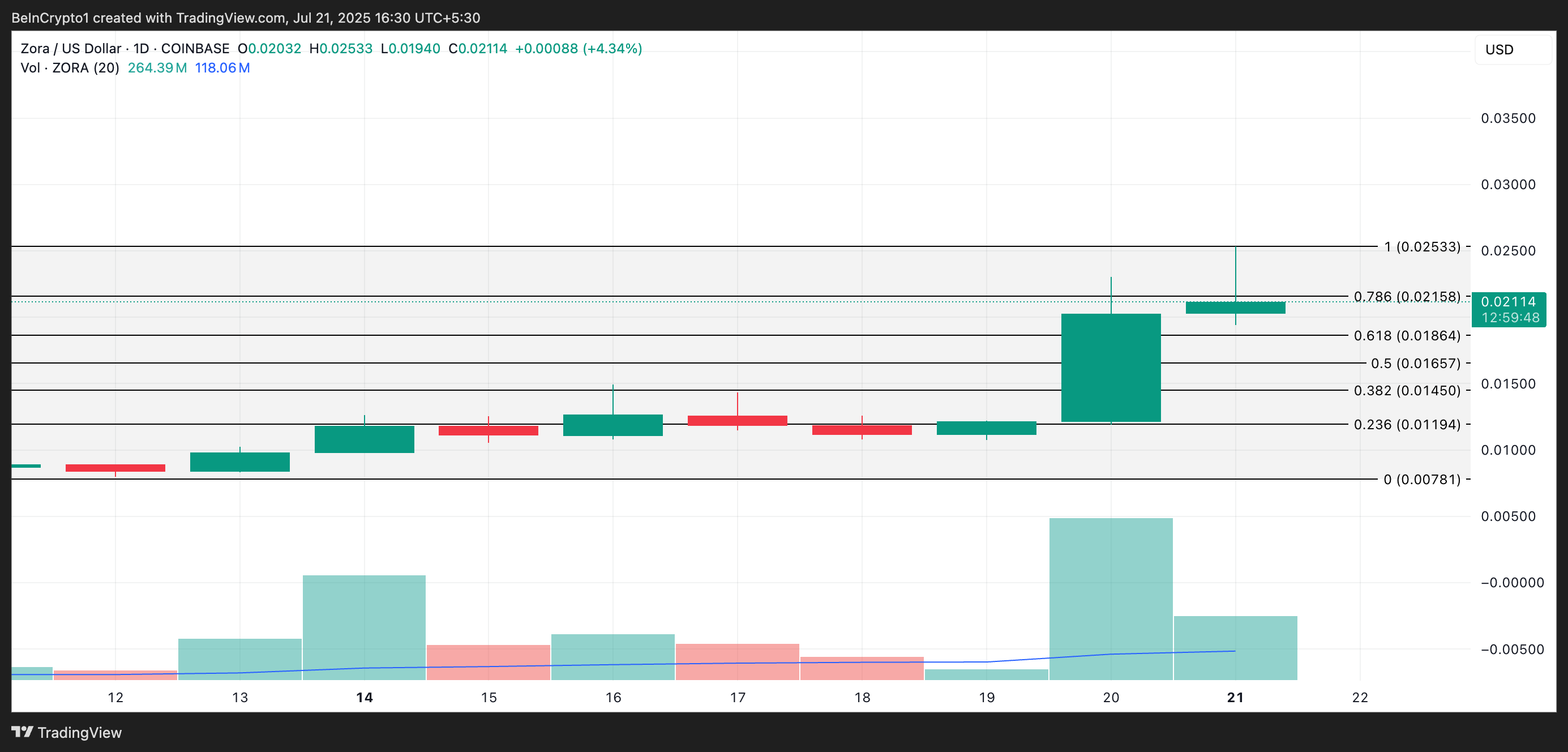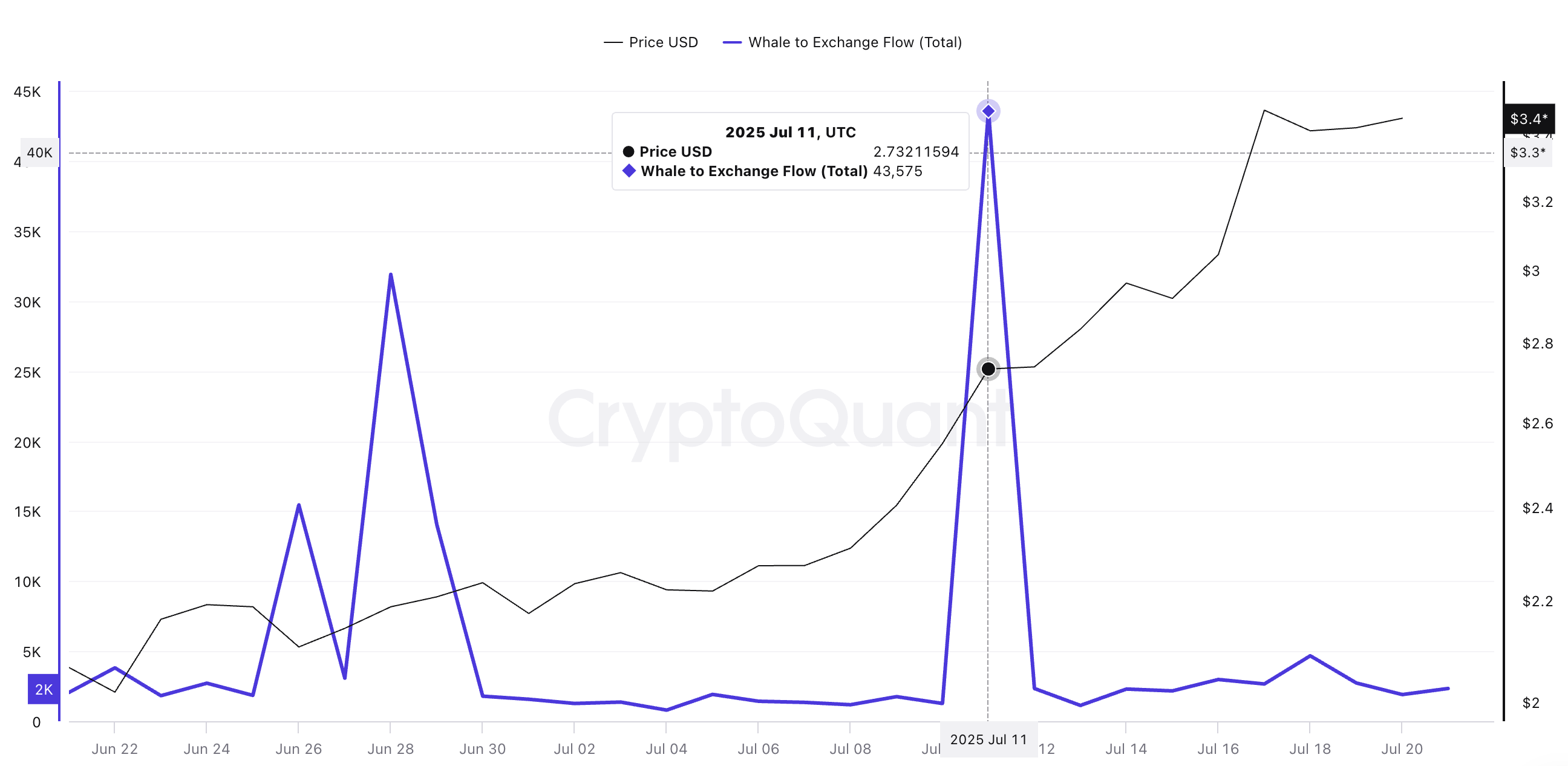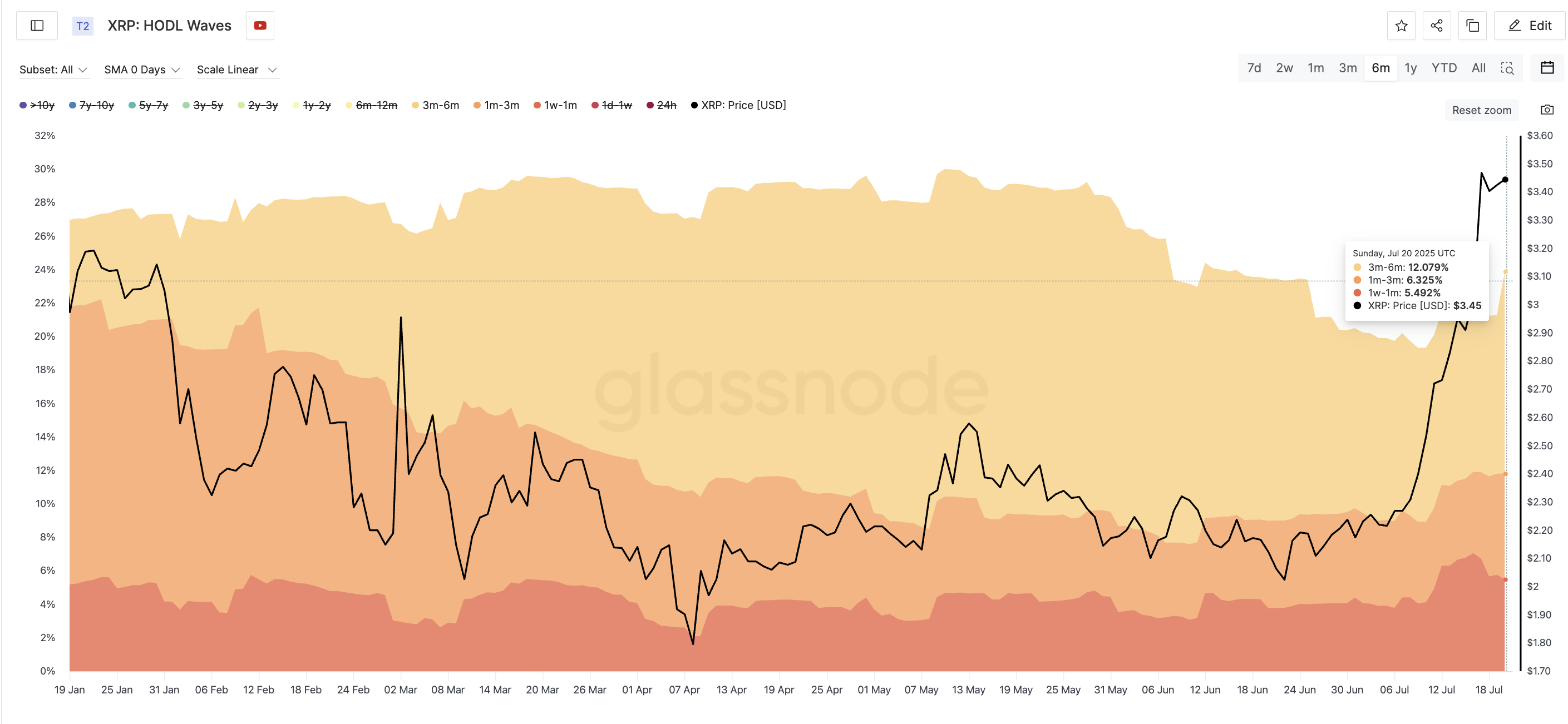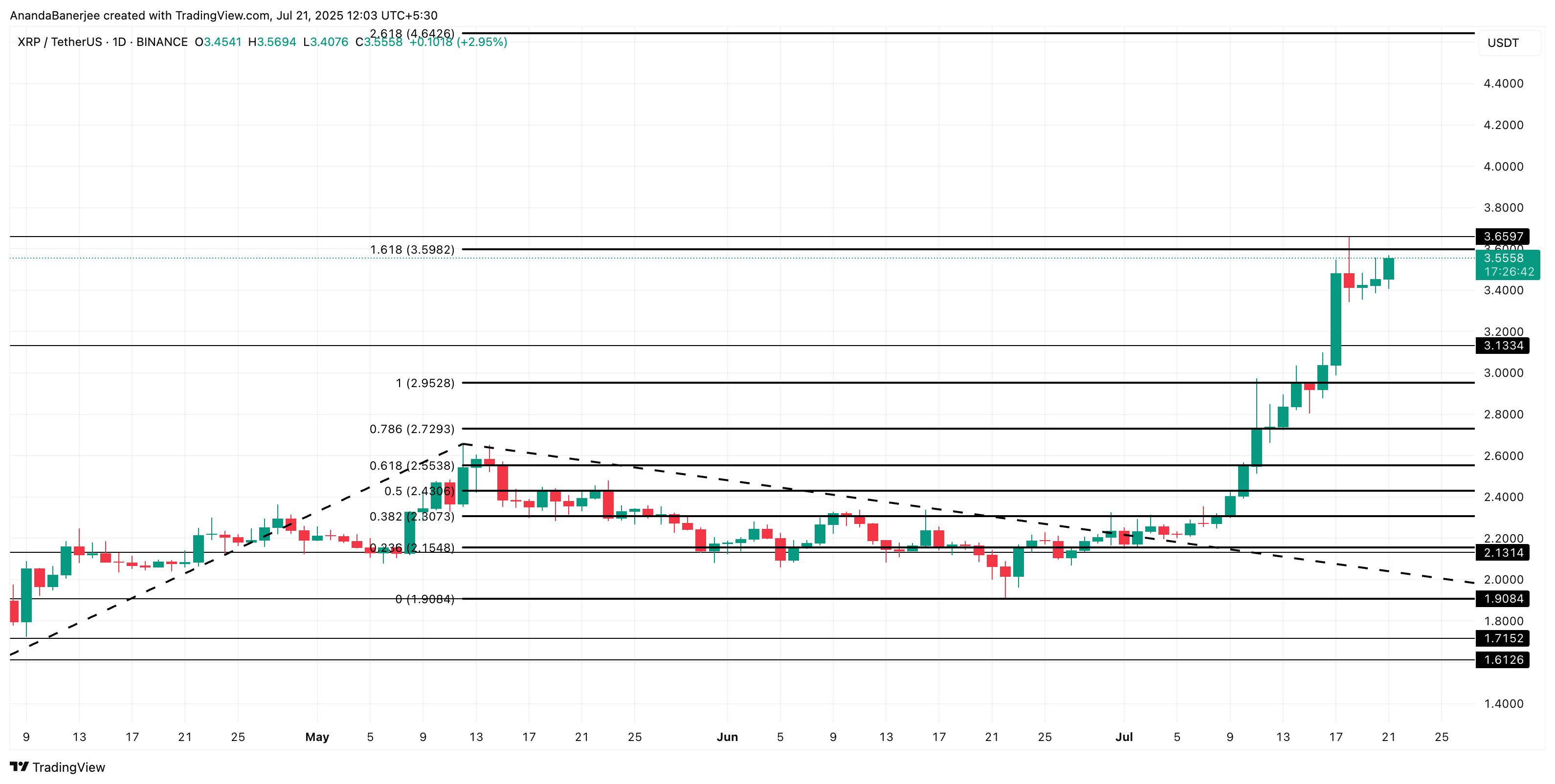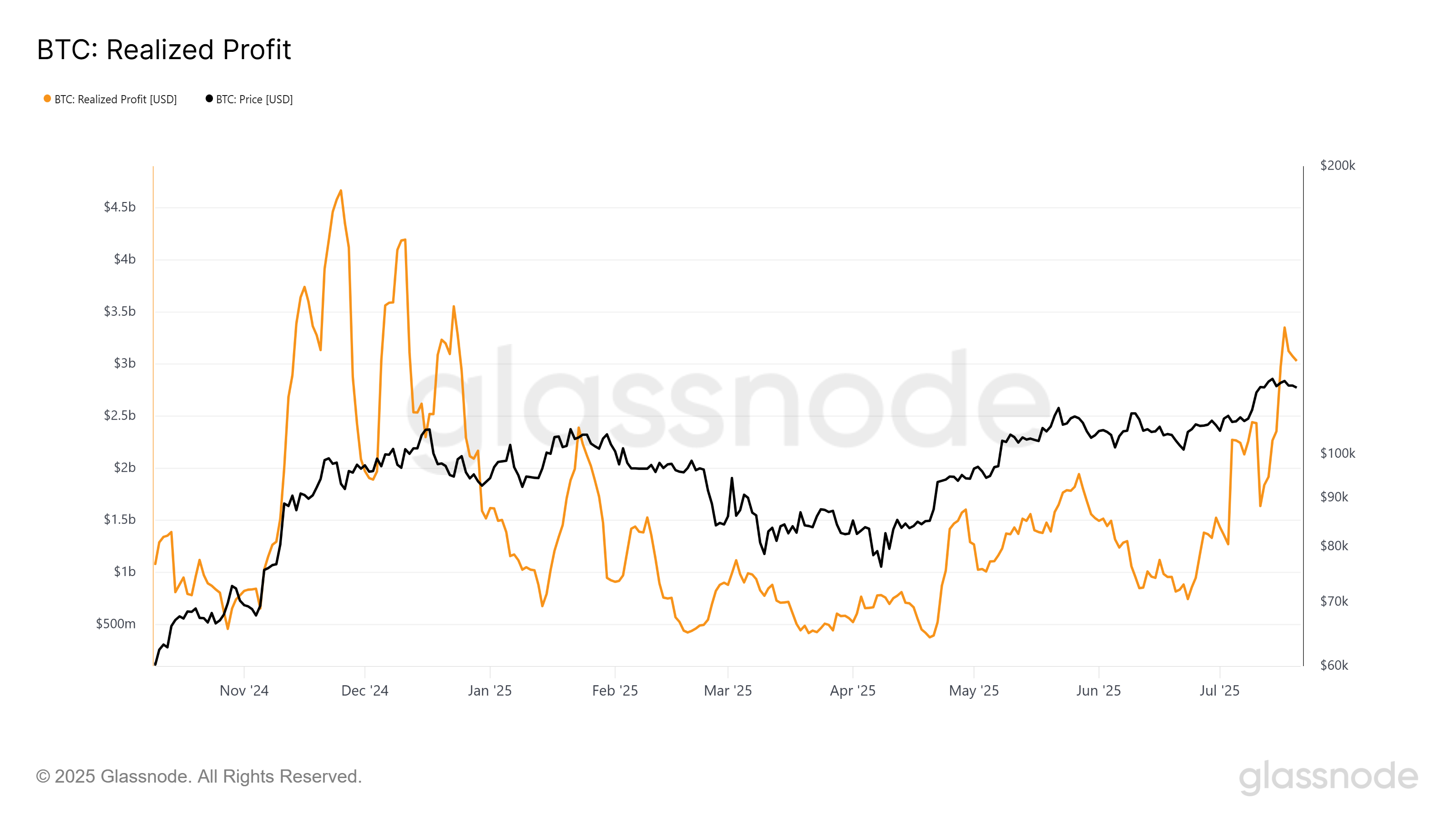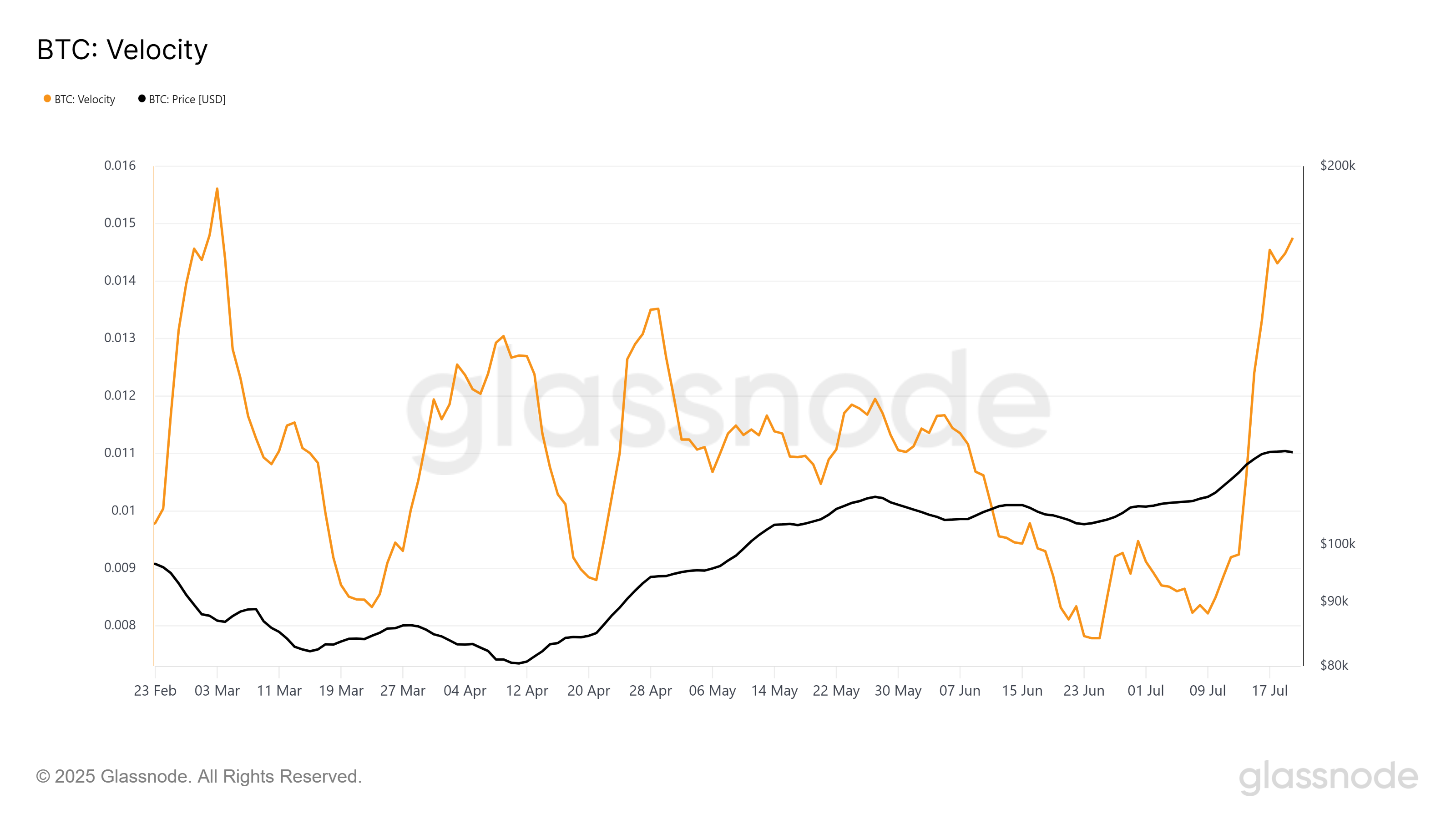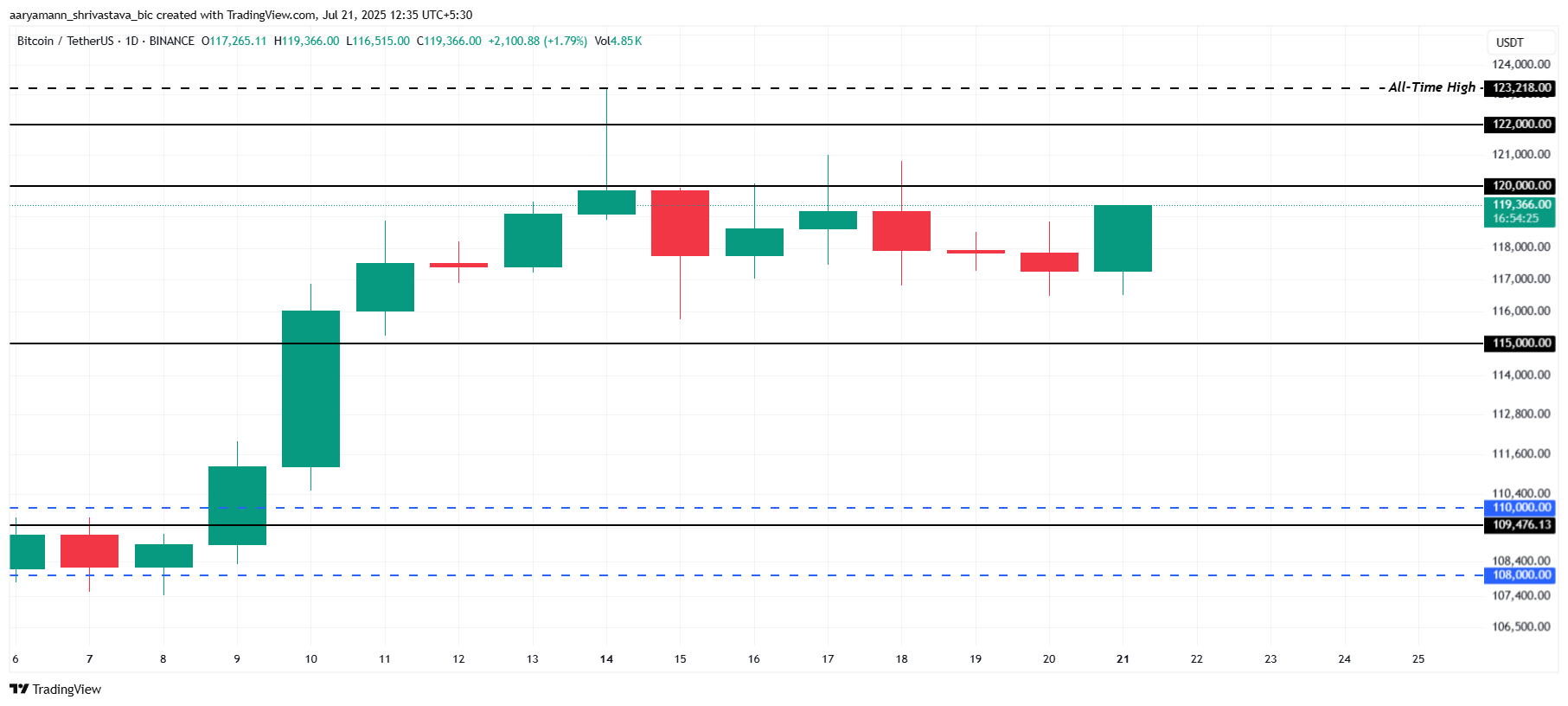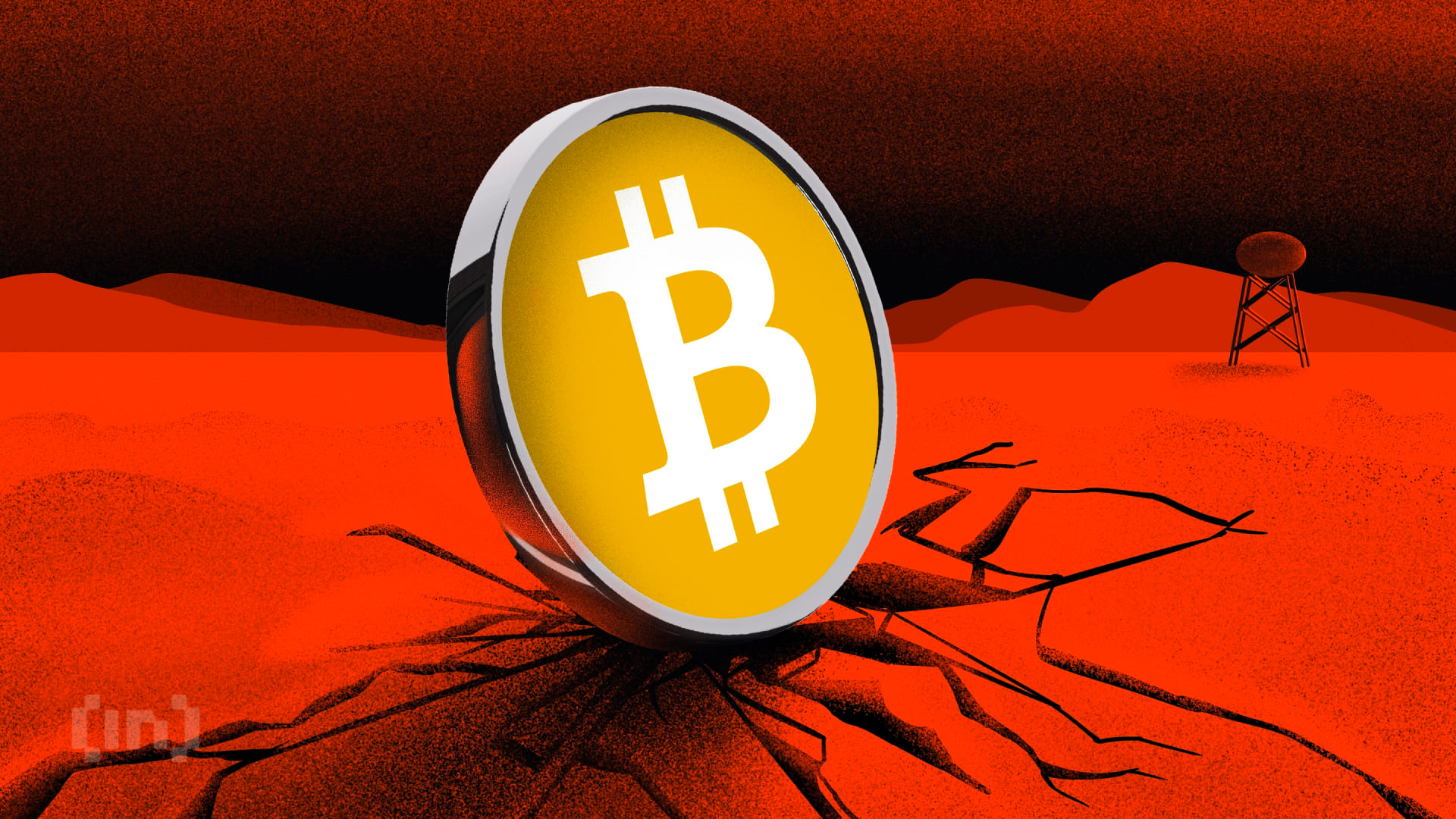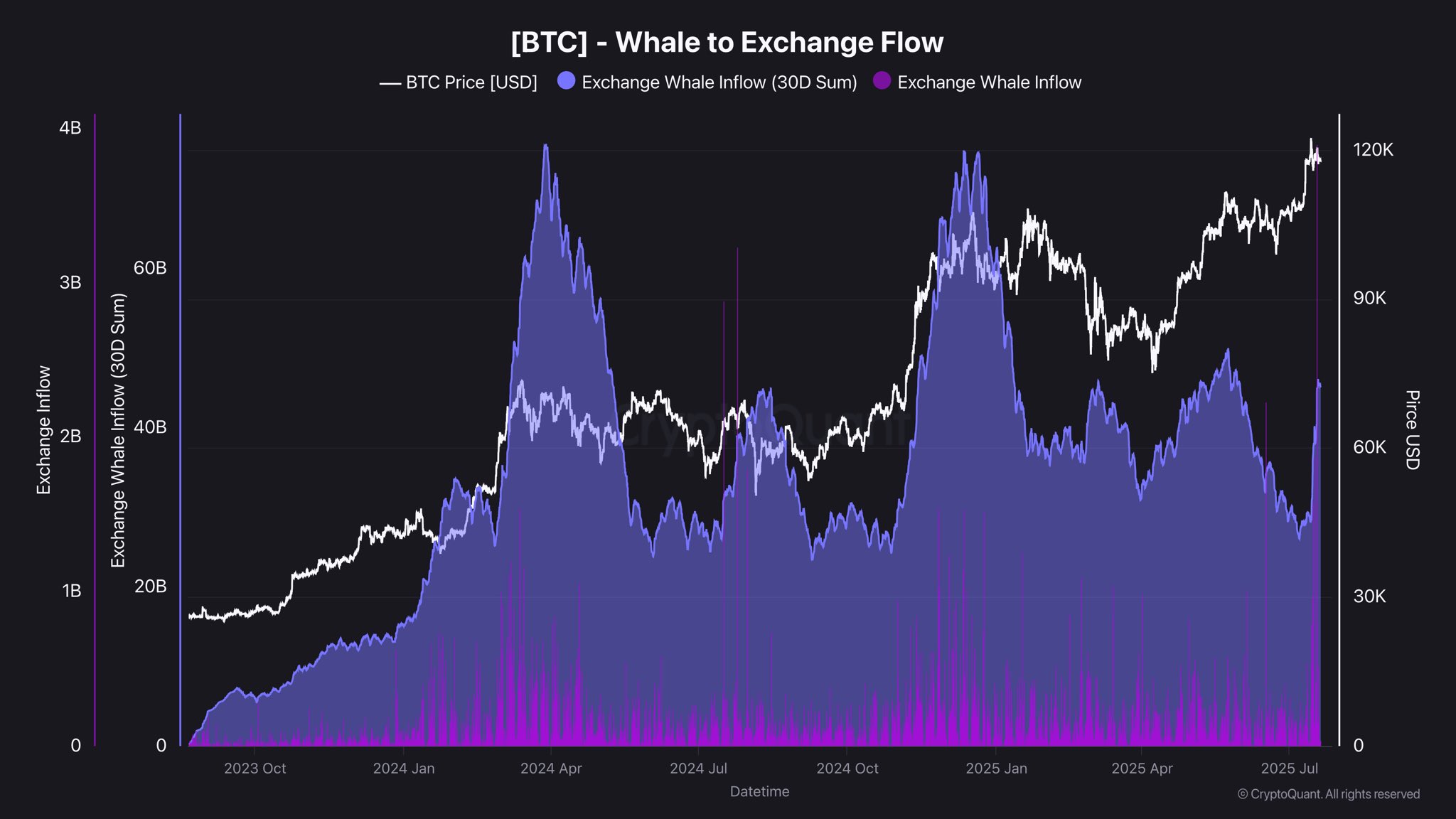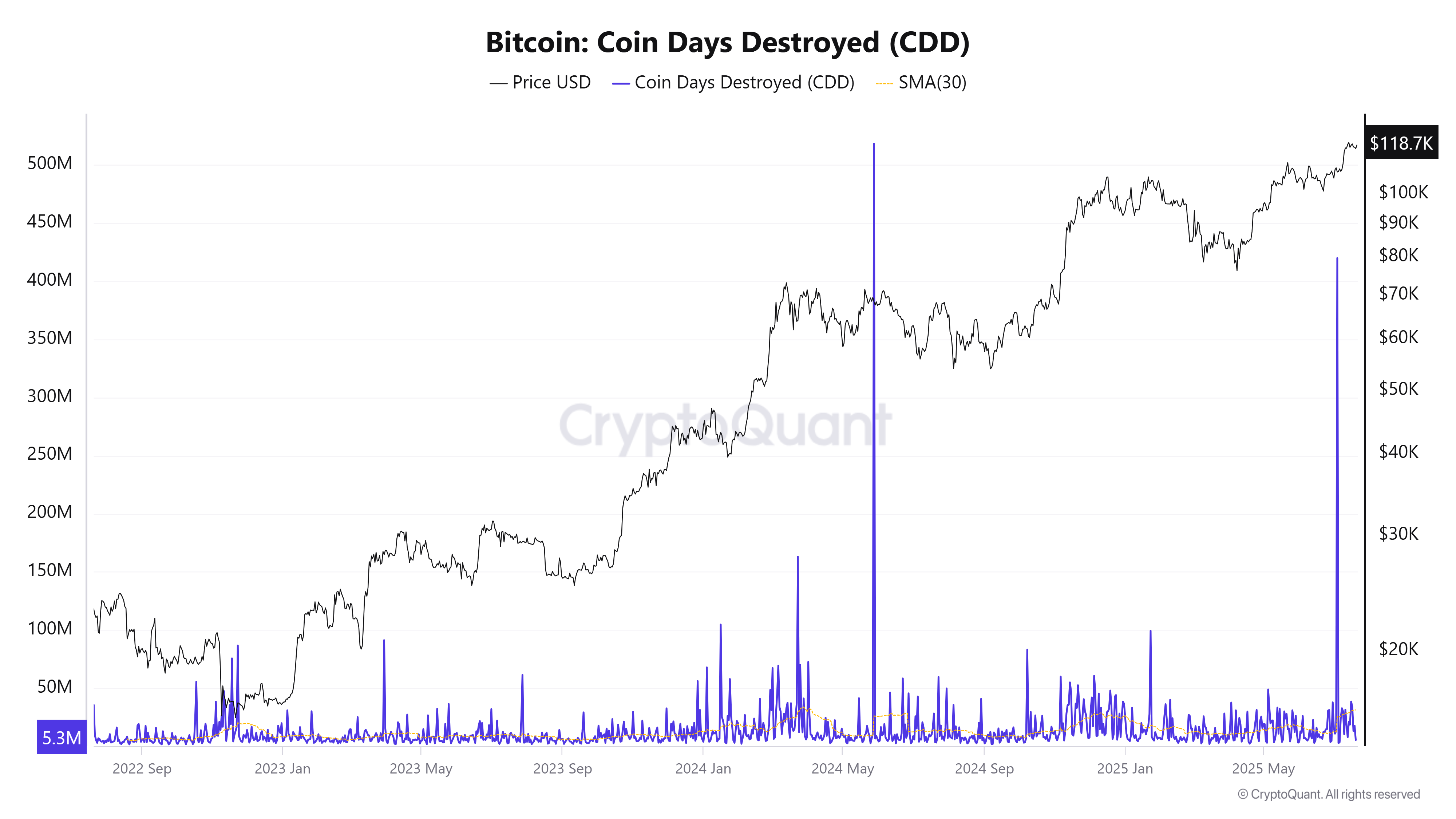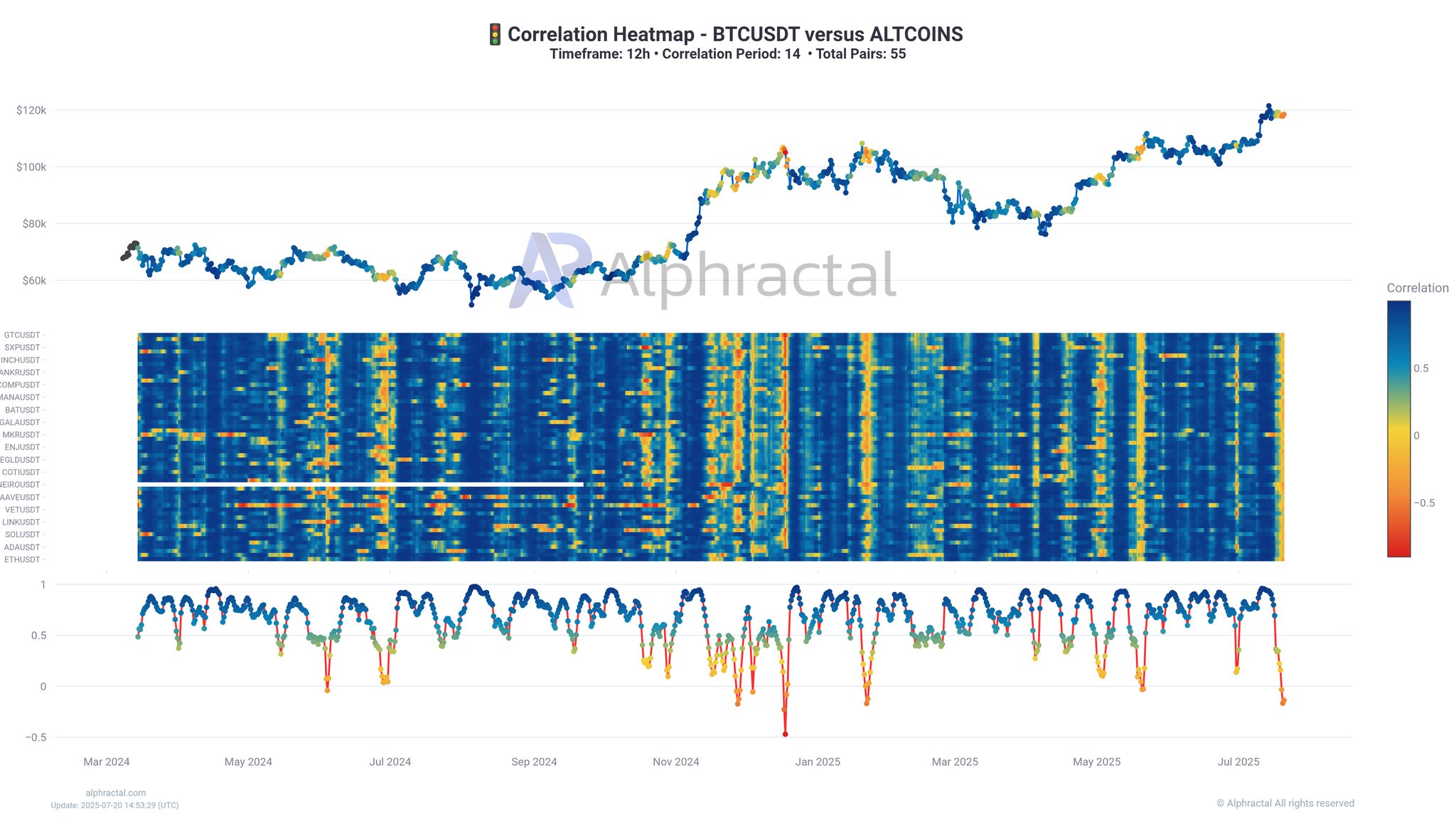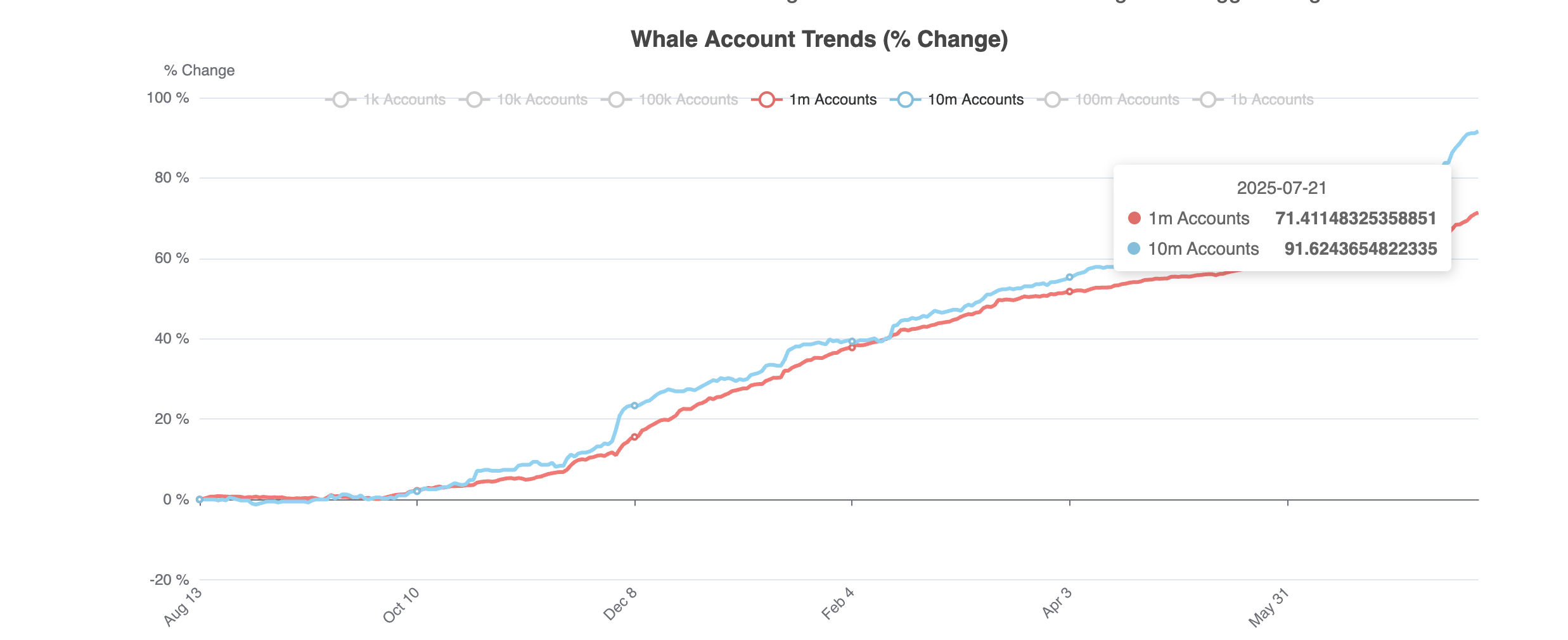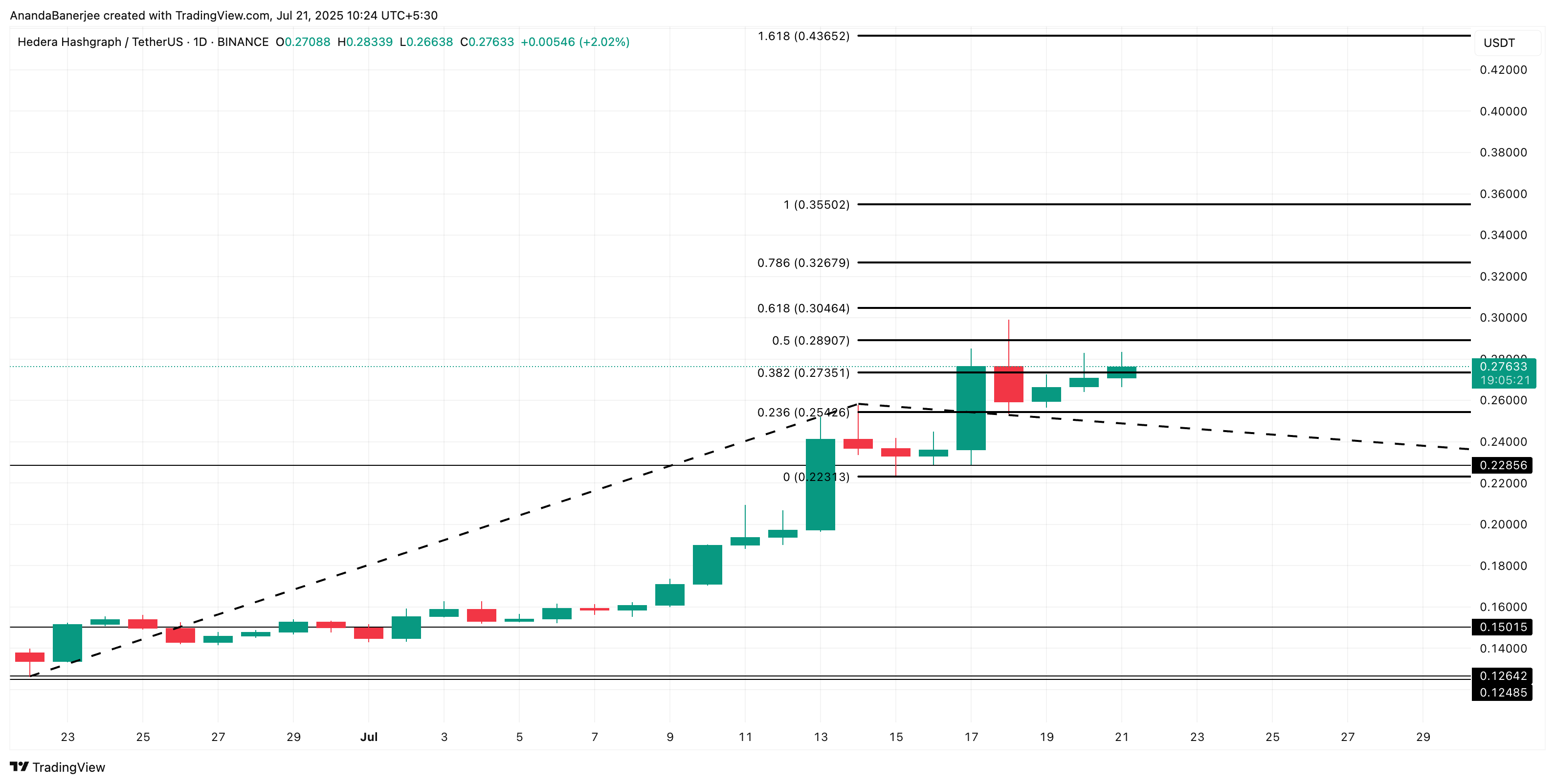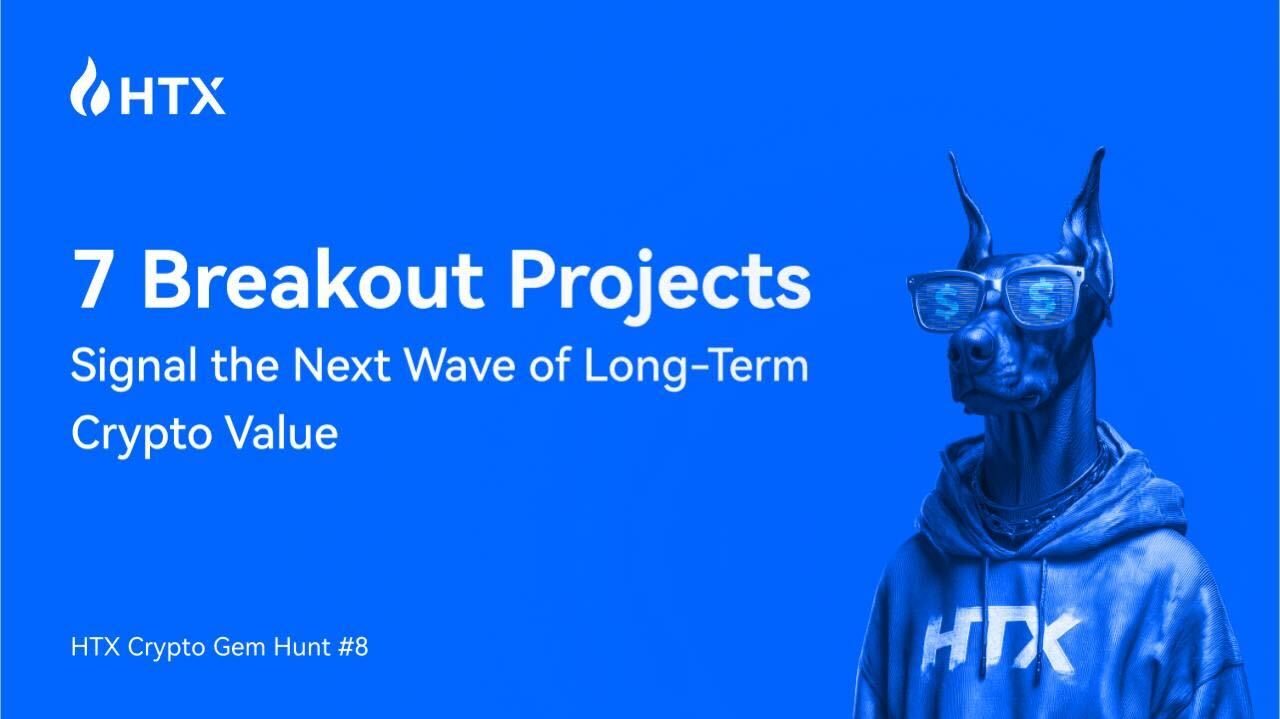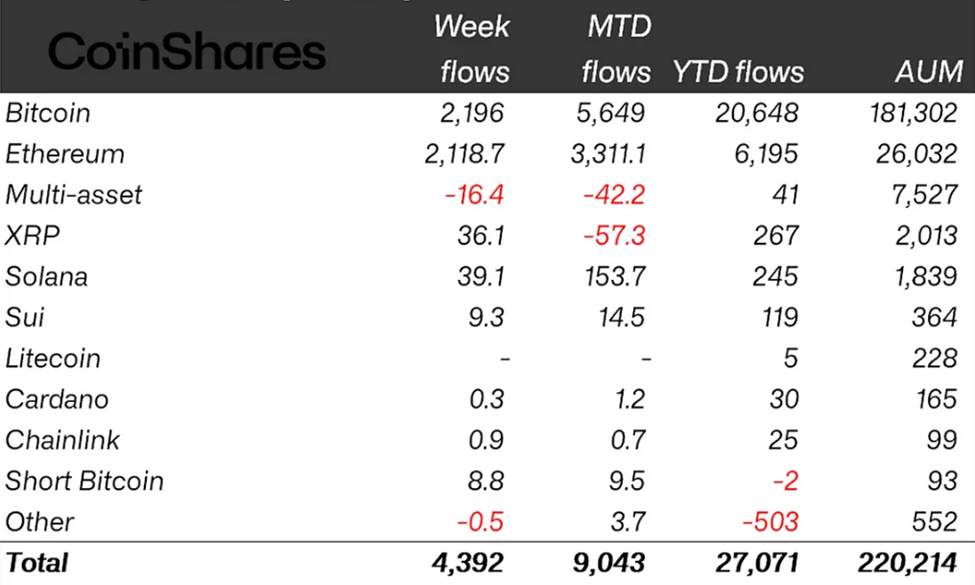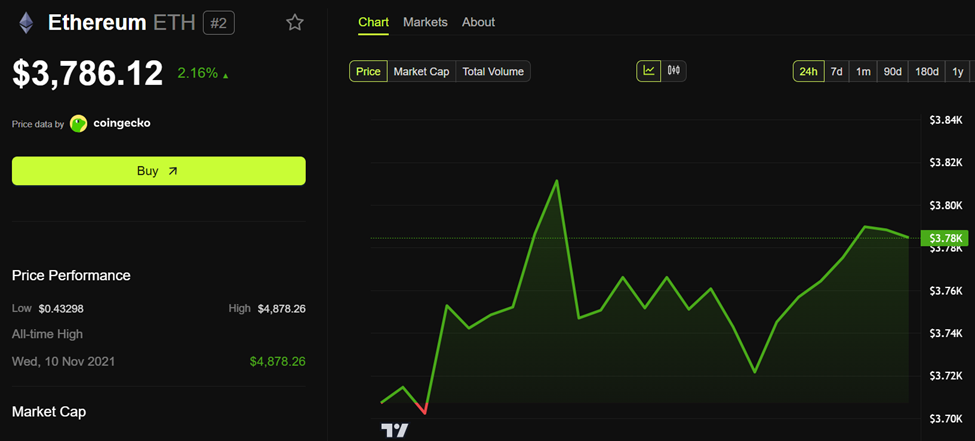Conflux (CFX) Hits 7-Month High as On-Chain Metrics Signal Further Upside
Layer-1 (L1) coin CFX has emerged as the top-performing altcoin today, hitting its highest price level since December 9, 2024.
The rally follows a series of recent ecosystem updates that have significantly boosted trading activity and investor sentiment around CFX. With demand continuing to strengthen, the coin appears well-positioned for further upside in the short term.
CFX Price Doubles in a Week as Asia-Focused Roadmap Unfolds
CFX currently trades at $0.23, climbing 83% over the past day. Over the past week, the coin’s price has increased by over 110%.
CFX’s price surge is largely driven by anticipation of its Tree Graph 3.0 mainnet upgrade, set to launch in August. The upgrade promises a major performance boost, enabling up to 15,000 transactions per second. It also introduces support for AI agents, real-world asset settlements, and cross-border payments, aimed at strengthening Web3 infrastructure in Asia.
Further, Conflux is developing an offshore RMB stablecoin in collaboration with AnchorX, Dongxin, and Ping An. The stablecoin is expected to gain traction through upcoming pilot programs in Central and Southeast Asia, expanding Conflux’s regional relevance.
Adding to its momentum, Conflux recently partnered with MetYa, an AI-centric SocialFi platform. These updates have culminated in a surge of demand for CFX, significantly driving up its value over the past few days.
CFX Rallies on Smart Money Accumulation
According to Santiment, CFX’s social dominance—a metric that tracks the percentage of crypto-related discussions focused on the asset—has soared to an all-time high. Per the on-chain data provider, this stood at 0.74% at press time, confirming the notable surge in online chatter about CFX.
For token TA and market updates: Want more token insights like this? Sign up for Editor Harsh Notariya’s Daily Crypto Newsletter here.
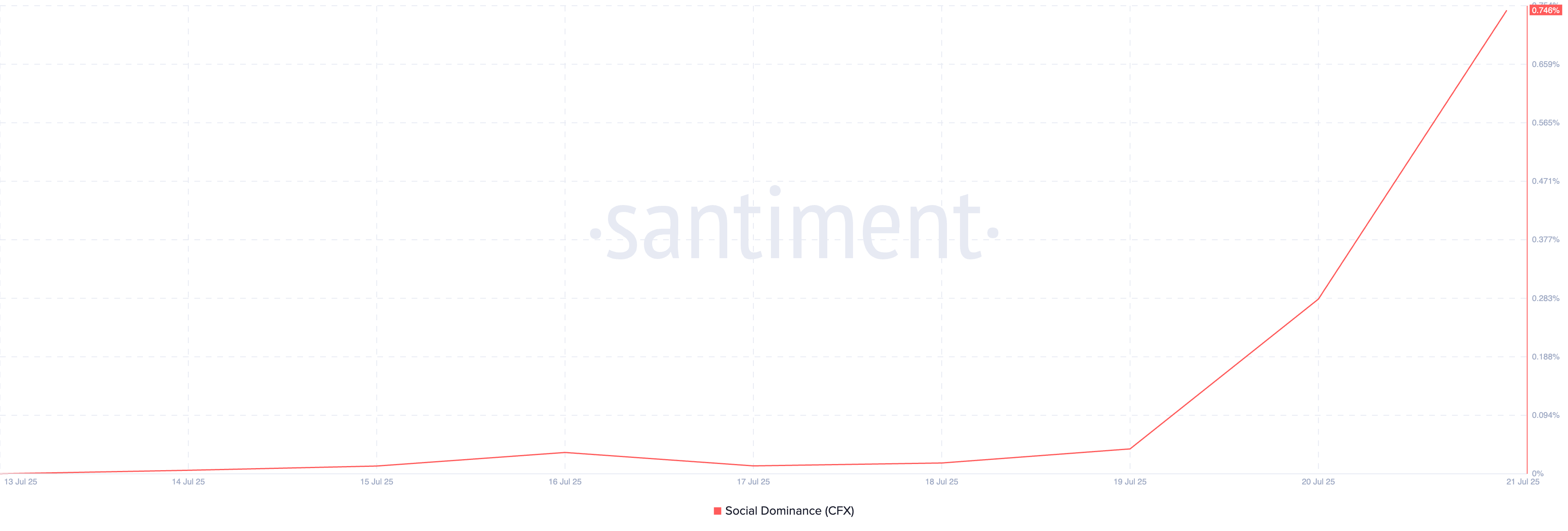
This confirms that the altcoin has captured significant attention in the broader market conversation, a trend that is often a precursor to increased retail activity and short-term price momentum.
Moreover, over the past three days, CFX’s Smart Money Index (SMI) has climbed, indicating rising interest from influential investors and large holders. Readings from this indicator show that its value has risen by 46% since July 19.
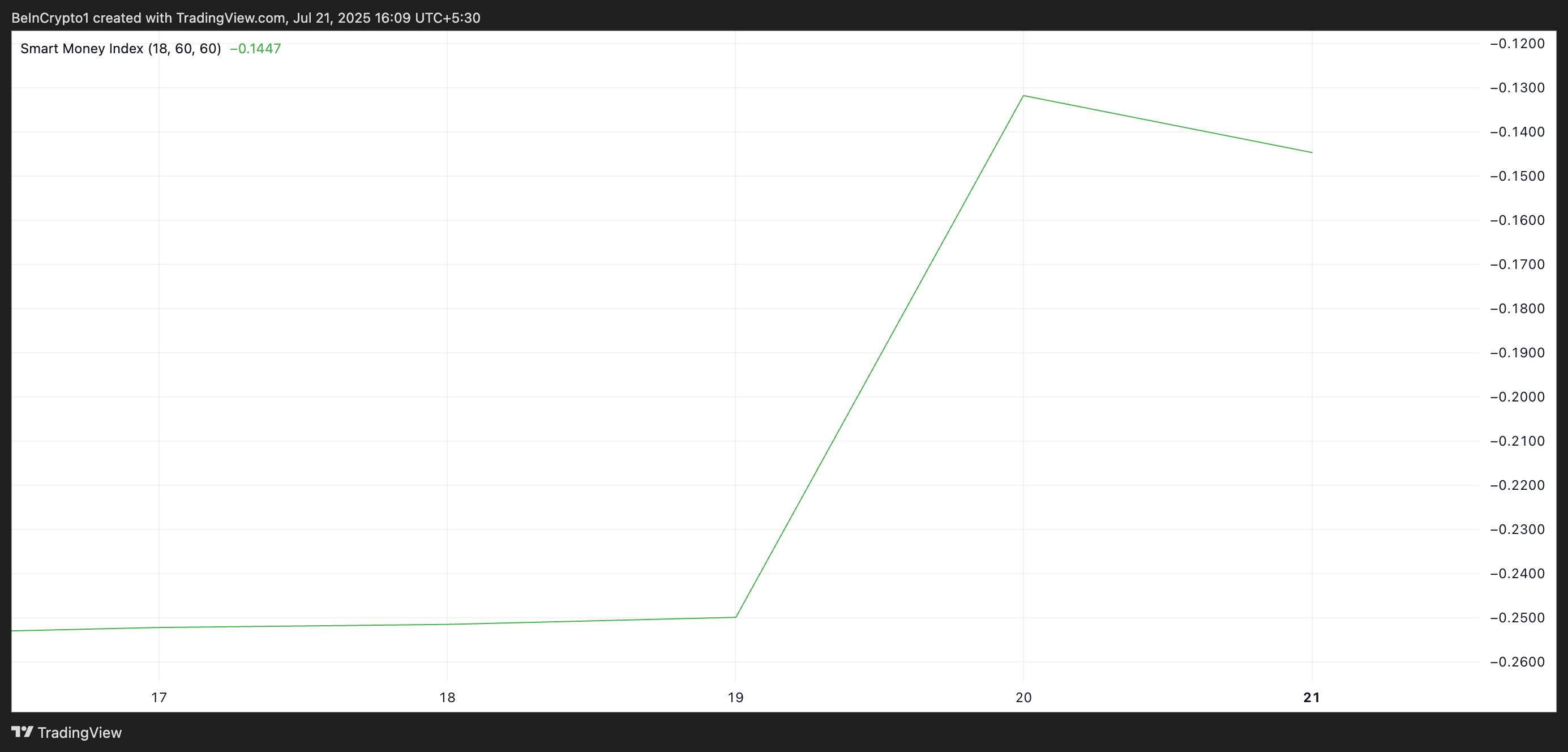
Smart money refers to capital controlled by institutional investors or experienced traders who understand market trends and timing more deeply. The SMI tracks the behavior of these investors by analyzing intraday price movements.
It measures selling in the morning (when retail traders dominate) versus buying in the afternoon (when institutions are more active).
A rising SMI like this signals that smart money is accumulating CFX, often ahead of major price moves — a trend primarily driven by the upcoming launch of the Tree-Graph 3.0 mainnet upgrade, which is set for the next few days.
CFX Eyes Breakout Above $0.25 — Can Bulls Push Toward April 2024 Highs?
Sustained buying pressure could see CFX break above its immediate resistance at $0.2484. A successful breach of this level could drive its price toward $0.306, a high last reached in April 2024.
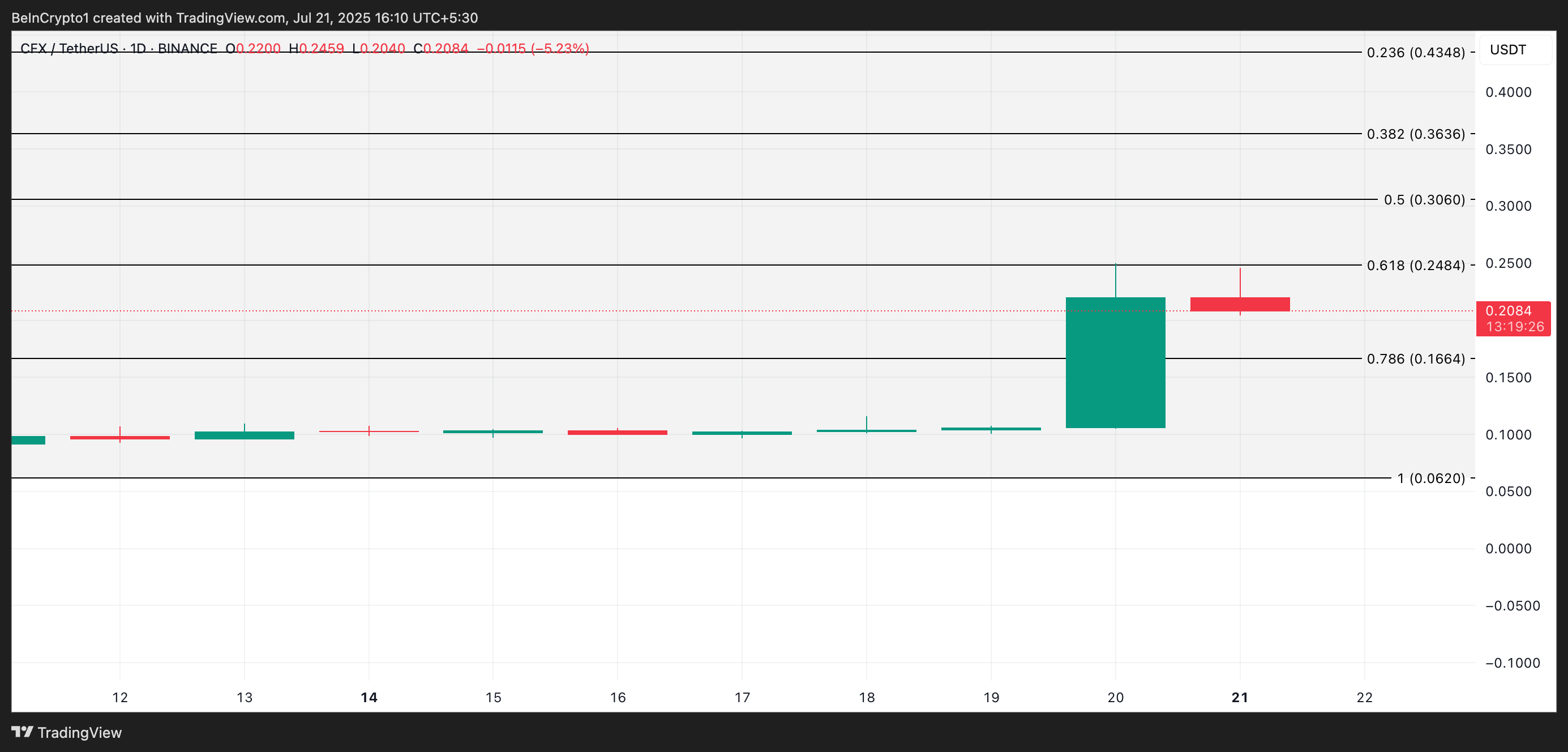
However, if market participants resume profit-taking, this bullish projection will be invalidated. In that case, the coin’s price could fall to $0.1664.
The post Conflux (CFX) Hits 7-Month High as On-Chain Metrics Signal Further Upside appeared first on BeInCrypto.



